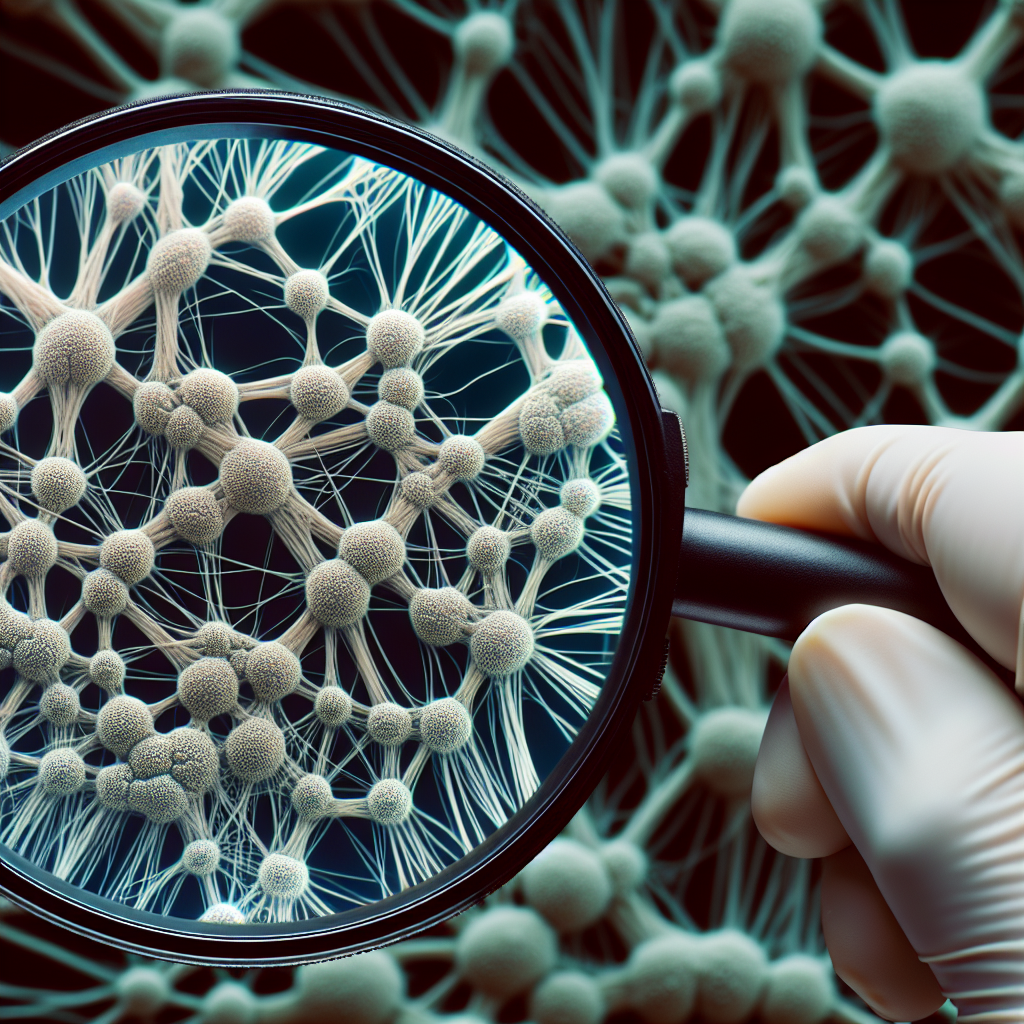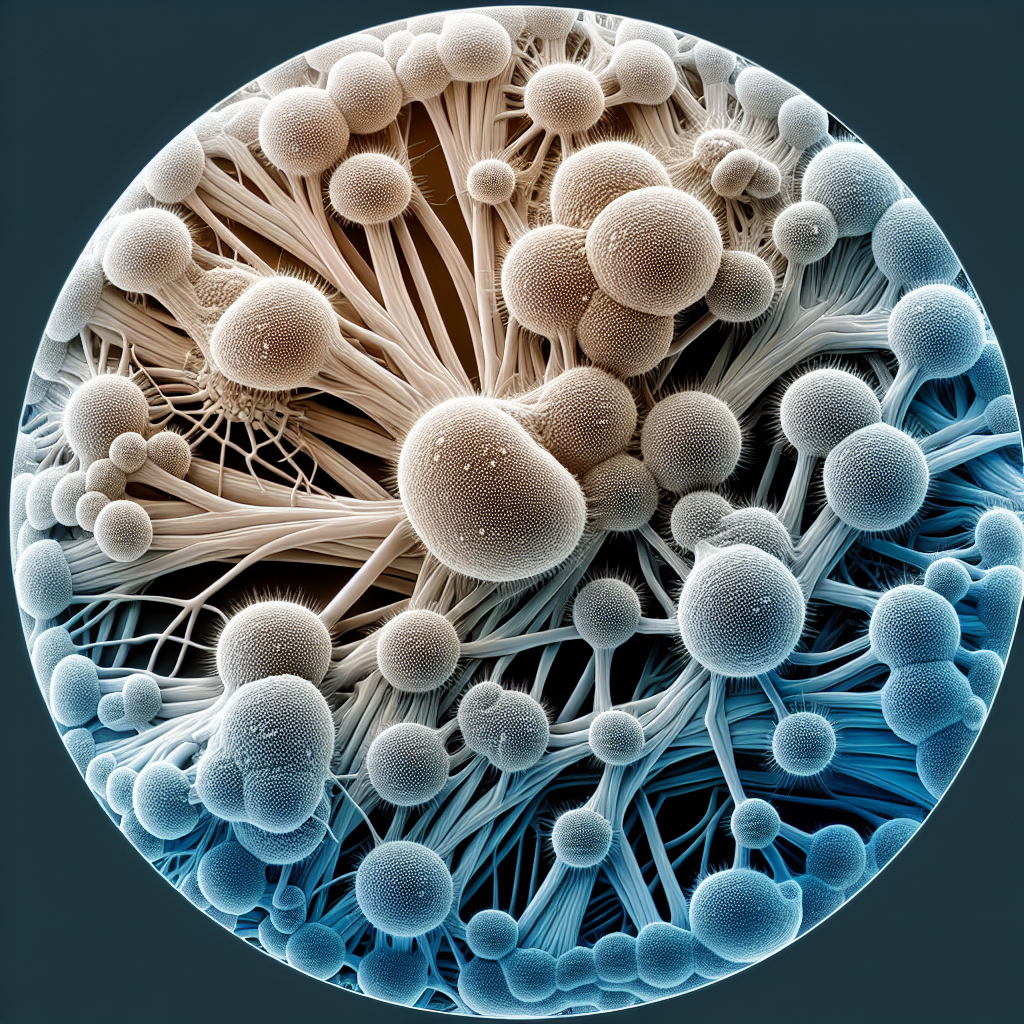In the comprehensive discourse, “Understanding the Role of Mycelium in Yeast Growth and Development,” you will gain a deep understanding of the interconnected world of fungi. This well-researched exploration uncovers the dynamics between mycelium and yeast, laying out the intricate relationship that influences the evolution and sustainability of these ubiquitous organisms. Through a series of factual information and data analysis, the article navigates the intricacies inherent in yeast growth and development, particularly the significant role of mycelium. By the end, you should find yourself better informed and more appreciative of the intricate workings of the fungal kingdom.

Definition of Mycelium and Yeast
What is Mycelium
Mycelium can be defined as a network of fine white filaments (hyphae) produced by fungi. It is essentially the vegetative part of a fungus. It not only provides nourishment to the fungus but also helps it in reproduction. The growth of mycelium across different types of substrates helps the fungus colonize new areas.
Understanding Yeast
Yeast is a type of single-celled microorganism that belongs to the fungi kingdom. It is unicellular and has been commonly used in baking and fermentation for thousands of years. Saccharomyces cerevisiae, one specific species of yeast, plays a critical role in winemaking, baking, and brewing due to its ability to convert sugar into alcohol and carbon dioxide.
Biological Structure of Mycelium In Relation to Yeast
Mycelium: The Fungal Network
Mycelium is made up of a multitude of hyphae, each of which is a longitudinal cell filament. The fungal network, as it is often referred to, is akin to a plant’s root system, with mycelium serving as an intricate subsurface web that absorbs nutrients from its surroundings and delivers them to the fungus.
The Structure of Yeast Cells
Yeast cells are fundamentally eukaryotic, meaning they possess a clearly defined nucleus that contains the cell’s genetic material. Given their unicellular nature, they are much less complex than multicellular organisms like mycelium. Yeast cells reproduce asexually by an easy and rapid process called budding, where the parent cell forms a bulge that eventually breaks off as a new cell.
Mycelium and Yeast: A Comparison
Similarities Between Mycelium and Yeast
Despite their differences, mycelium and yeast share several similarities, primarily that they both belong to the fungi kingdom. They also share comparable modes of energy generation. Both yeast and mycelium are heterotrophic organisms, requiring organic compounds from their environment for energy.
Differences Between Mycelium and Yeast
Perhaps the most apparent difference between mycelium and yeast is their basic form. While mycelium are multicellular organisms composed of a mass of branching hyphae, yeast is unicellular. Another difference is how they reproduce, with yeast undergoing asexual reproduction through budding, while the mycelium spreads through the distribution of fungal spores.

The Role of Mycelium in Yeast Cultivation
Growth and Reproduction in Fungi
The way fungi grow and reproduce vastly depends on the type of fungi and their environmental conditions. Mycelial fungi spread by extending their hyphae in search of new sources of food. This extension of new hyphae results in the formation of a mycelial mat, which matures to produce fungi that release spores.
How Mycelium Enriches the Environment for Yeast
Mycelium’s function is crucial for many ecosystems because it decomposes various organic substances, recycling essential nutrients and minerals in the process. This decomposition enriches the environment, making it more hospitable for other organisms like yeast. Yeast, being a decomposer as well, benefits from the nutrients released by mycelium, thus facilitating its own growth and reproduction.
Beneficial Effects of Mycelium on Yeast Growth and Development
Mycelium’s Role in Nutrient Uptake
Mycelium has a large surface area relative to its volume, allowing it to absorb a high amount of nutrients. As it breaks down organic matter in the environment, it releases nutrient-rich substances that yeast can utilize. This is how mycelium aids in the nutrient uptake of yeast, encouraging its growth and development.
How Mycelium Boosts Yeast’s Survival Rates
In addition to providing essential nutrients, mycelial networks can create microenvironments in the soil that protect yeast cells from temperature extremes and desiccation. They can engulf and store water, maintaining a moist environment critical to yeast’s survival.
Potential Negative Impacts of Mycelium on Yeast Growth
Competition for Resources
Despite the beneficial relationship between mycelium and yeast, there can also be potential competition for resources, such as food and space. If present in the same environment, the mycelium’s vast network could potentially out-compete yeast for valuable nutrients—ultimately inhibiting yeast’s growth.
Potential for Hostile Environmental Conditions
Certain types of fungi can produce toxins that might create an unfavorable environment for yeast. Additionally, if the mycelium overpopulates an area, it could result in an imbalance in the soil’s pH, making it unsuitable for yeast.
The Participation of Mycelium in Yeast Fermentation
The Process of Fermentation
Fermentation is a metabolic process by which yeast converts sugar into alcohol and carbon dioxide. This process is behaviorally anaerobic and is of significant use in the industries of baking and brewing. The carbon dioxide creates the gas bubbles necessary for leavening bread, while the alcohol content characterizes alcoholic beverages.
Mycelium’s Influence on Fermentation Rates and Quality
While research is limited, some studies suggest that mycelium may enhance the rate and yield of yeast fermentation. Mycelium’s ability to secrete enzymes creates an environment that optimizes yeast’s fermentation capacity, potentially improving both efficiency and product quality.
How Mycelium Assists in Yeast Sporulation
Process of Yeast Sporulation
Yeast sporulation is a survival strategy that yeast employs under nutrient-deprived conditions. The process results in the formation of a spore that is highly resistant to environmental stressors, prolonging the yeast’s viability.
The Interaction Between Mycelium and Sporulation
Mycelium could potentially aid in yeast sporulation by creating environmental conditions that trigger the process. While this interaction is not yet fully understood, it poses an interesting avenue for future research.
The Use of Mycelium and Yeast in Industry
Mycelium and Yeast in Food Production
Mycelium and yeast have broad applications in the food industry. Yeast is instrumental in baking, brewing, winemaking, and cheese production. Mycelium, on the other hand, is used in the cultivation of various edible mushrooms and has recently been employed in creating plant-based meat substitutes.
Mycelium and Yeast in Biofuel Production
Advancements have also seen mycelium and yeast used in biofuel production. Yeast fermentation is a critical process in producing bioethanol, while mycelium has been explored for its capacity to break down agricultural waste into biofuels.
How Understanding the Role of Mycelium Can Impact Future Yeast Research
Potential Improvements in Yeast Cultivation
A better understanding of the relationship between mycelium and yeast could lead to improvements in yeast cultivation. By leveraging the beneficial effects of mycelium, we could potentially enhance yeast growth rates, fermentation capacity, and resilience—efficiencies that would have significant implications for various industries.
Future Directions for Research
Observations of the effects of mycelium on yeast provide opportunities for future research. Unanswered questions include how mycelium influences the yeast life cycle and how its presence affects yeast behavior under various environmental conditions. Such studies could be a launching pad for improvements in biotechnology practices and environmental management.
